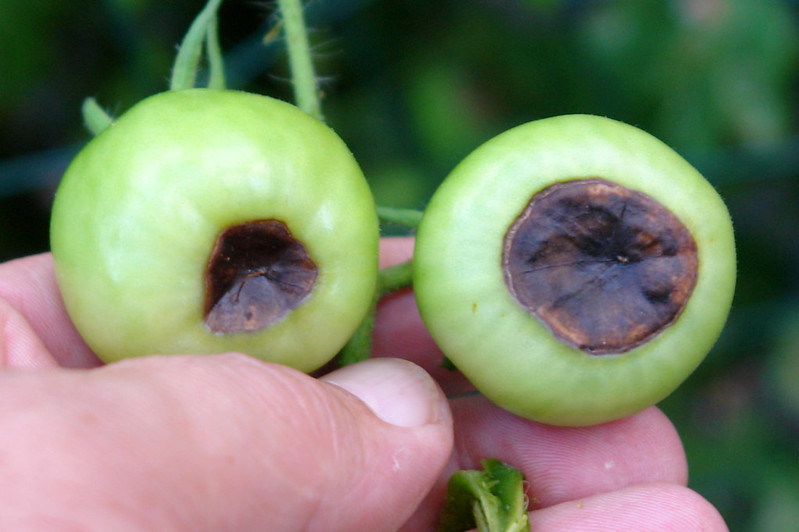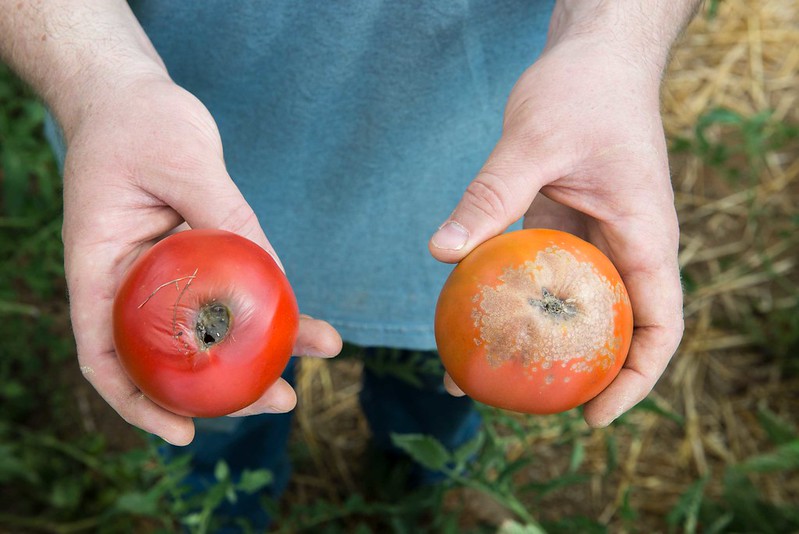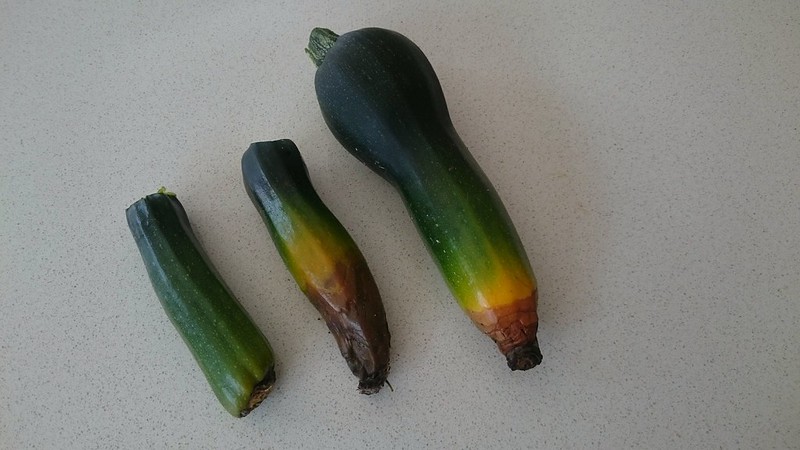Blossom End Rot: Protect Your Produce!
PublishedI was very excited the first year I grew peppers in my garden, as usually I only grew tomatoes, and they were growing well for my first time. I had many peppers coming along nicely, and all was well until one morning I looked closer and my heart sank. My peppers all had spots of rot on them, ranging from the size of a fingernail to almost a quarter of the fruit. After some research, I nailed down the culprit: blossom end rot.

Blossom end rot strikes just about every gardener at least once. It’s an especially disheartening condition as it isn’t caused by pests or disease. It’s most common on tomatoes but can also affect many plants in the solanaceous family such as eggplant, squash, and my poor peppers.
What Is Blossom End Rot?
Blossom end rot is a physiological disorder which causes the tissue of the blossom end of the fruit (the side opposite to the stem, where the flower was attached) to break down and rot, leaving produce inedible. Commonly affecting the first fruit formed on a plant, blossom end rot begins with water-soaked spots (similar to small bruises) appearing on the fruit. These spots are usually towards the blossom end of the fruit, but on peppers may appear on the sides and can resemble sun scald. These spots enlarge, become black or brown, and sink into the fruit and become leathery.

What Causes Blossom End Rot?
Blossom end rot is caused by a lack of calcium in the fruit. While it’s possible to be the result of calcium-deficient soil, usually a stress factor is preventing the plant from transporting calcium correctly. As a result, adding more calcium to your soil won’t necessarily help your plants recover.
The most common cause of blossom end rot is inconsistent watering. Plants rely on a consistent intake of water to transport calcium through the roots, and drought stress will affect this system.
Too much fertiliser in the soil, especially ammonia-based nitrogen, can interfere with your plant’s ability to absorb calcium.
High soil pH can prevent calcium from becoming soluble, making it unavailable to your plants.
As plants rely on their roots to absorb calcium, any damage to the root system can have a negative impact on transporting the nutrient to the fruit.

How Can I Control Blossom End Rot?
While it’s very discouraging to see in your garden, blossom end rot can easily be treated, allowing your plants to return to producing healthy fruit. Once you spot signs of blossom end rot, immediately pick any affected fruits to save your plant from wasting energy on ripening them.
The first step is to evaluate your watering schedule; are you watering often enough? Are you providing enough water? Aim to keep the soil consistently moist but not wet; mulching around plants can help with water retention, as well as shading the soil to keep it cool.
If you conclude that watering is not the issue, consider performing a soil test to check for other causes. Your soil probably has sufficient calcium, but may have another imbalance which is causing the blossom end rot.
How Can I Prevent Blossom End Rot?
A commonly shared tip about preventing blossom end rot is to scatter crushed eggshells around affected plants, or to bury them in the soil. This is a myth, as any nutrients in the eggshells won’t be readily available for your plants to use. Instead, the best way to prevent blossom end rot is by maintaining a healthy root system. Maintain a consistent watering schedule, mulch if necessary, and avoid heavily fertilising when plants begin flowering.
